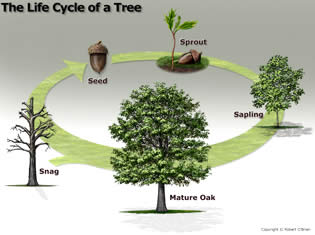 I was so nervous for our lesson this week! We wanted to incorporate a lesson that allowed the students to practice using hand lenses while also incorporating an introduction to life cycles After a while of thinking, we finally came up with this great idea to have the 2nd graders become detectives helping us find our friends "Annie Acorn" and "Eddy Egg" that had gone missing. The idea seemed like it would be a fun way for the students to work on the process skill of observation by learning to manipulate the hand lens while also exploring the life cycle of plants and animals (all of which are in the second grade curriculum frameworks).
I was so nervous for our lesson this week! We wanted to incorporate a lesson that allowed the students to practice using hand lenses while also incorporating an introduction to life cycles After a while of thinking, we finally came up with this great idea to have the 2nd graders become detectives helping us find our friends "Annie Acorn" and "Eddy Egg" that had gone missing. The idea seemed like it would be a fun way for the students to work on the process skill of observation by learning to manipulate the hand lens while also exploring the life cycle of plants and animals (all of which are in the second grade curriculum frameworks).Since we were incorporating multiple objectives, this lesson had a lot going on and as a result, required a lot of planning and preparation on our part. I would have to say that the materials management was half our battle with this lesson. Both lifecycles had four clues for each of the students to examine and record into their booklets, as well as a physical acorn and egg (waterbead) for the students to manipulate and examine which meant that Mia and I had to keep track of all the objects, clues, and booklets for both mystery cases and figure out a way to manage the materials so that we would not loose (or waste) valuable teaching time. Overall, I would have to say that the lesson progressed rather smoothly and that we were able to manage the large number of materials that we had very well! Although it was a little nerve wracking at first, the process and the materials management become easier as the lesson progressed.
The second half of the battle was promoting and maintaining student engagement in the lesson. Fortunately, this way very easy. By developing a mystery for the students to solve and by introducing the lesson to the students as a mystery that we needed their help to solve, the students were very interested and as a result were engaged in the lesson from the beginning. Since there was so much going on and so many new things for the kids to look at throughout the lesson, the students seemed to maintain their interest and excitement for the entire hour. They also enjoyed solving the mystery and made excellent, rational connections as to why we could not find our friends "Eddy Egg" and "Annie Acorn"
This lesson was very exciting for me because it was rather challenging and thought provoking to create. It was also amazing to see that the students really seemed to enjoy the lesson that we had created! Throughout the lesson the students appeared to be having a lot of fun acting as detectives; they also appeared to enjoy reading the miniature clues with the hand lenses. In addition to learning how to manipulate the lenses they also seemed to learn a lot about the lifecycle of the tree and the lifecycle of the frog (the two cycles we incorporated) which was very exciting and rewarding for us! All of the planning and preparing was well worth it to see the students excitement and engagement in science! As crazy and involved as it was, our lesson plan actually worked! We cannot wait to bring in our mystery insects next week for the students to examine. They are going to be so excited!


What a great lesson you and Mia created. So creative!!
ReplyDeleteYou guys did a wonderful job at incorporating life cycles and the use of hand lens into one lesson..while still keeping track of all your materials! They must have been super excited to help you solve the mystery...it probably really brought out the natural scientists/curiosity in them all. I starting to wish we could all sit in on eachothers lesson to see everything...I feel like I am missing out! haha
ReplyDeleteKatie,
ReplyDeleteWhat an adorable idea to teach them to use materials properly! The idea of them being science "detectives" was wonderful and the catchy names "Annie Acorn" and "Eddie Egg" were perfect for second graders to engage them. Awesome idea and implementation of materials!